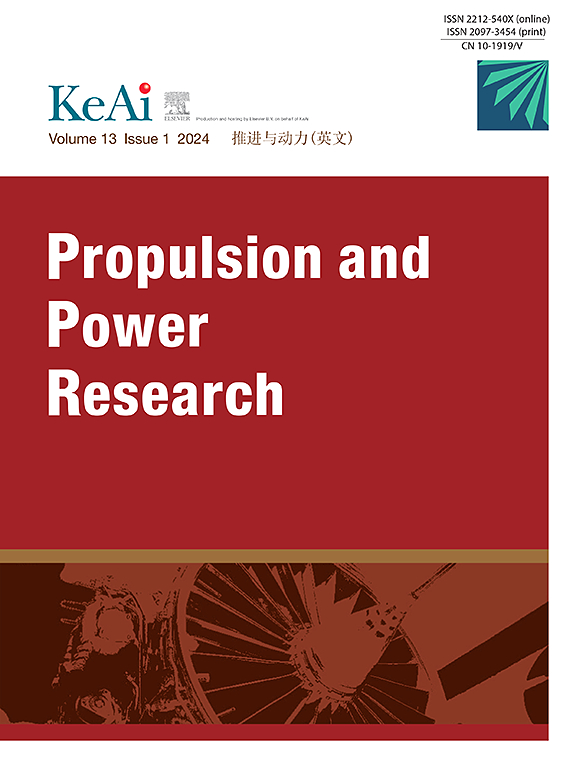微尺度锥形腔接收器的优化:最先进的方法
IF 5.4
2区 工程技术
Q1 ENGINEERING, AEROSPACE
引用次数: 0
摘要
近年来,关于提高清洁和可再生能源系统效率的研究越来越多。本研究考察了微尺度太阳能布雷顿循环应用对锥形腔热接收器形状的影响。此外,它还建立了理想的接收器配置。这项新工作明确地解决了微尺度锥形模型的优化问题,建立在研究小组早期的研究基础上,强调了减少总热损失的重要性。采用Design Modeler建立接收机模型,并在ANSYS 2021R2 Workbench软件中进行CFD分析,以限制对流方式的热损失。然后使用表面优化技术,并对结果进行了检验。为了验证所获得的结果,还采用了直接优化方法,得到了相同的结果。发现受热器的内部高度和底部两侧宽度对传热系数的影响最大。热性能方面,优化后的圆锥形内高、总宽、顶宽、左边和右边尺寸分别为384、198、114、48和57 mm。研究结果表明,通过降低传热系数高达90%,测试形状的热性能得到显著改善。因此,整个系统的效率提高了约1.3%-1.95%。本文章由计算机程序翻译,如有差异,请以英文原文为准。
Optimization of a micro-scale conical cavity receiver: A state-of-the-art approach
In recent years, research on enhancing the efficiency of clean and renewable energy systems has increased. This study examines how a micro-scale solar Brayton cycle application performs about the conical cavity thermal receiver shape. Additionally, it establishes the ideal receiver configuration under consideration. The new work explicitly addresses the optimization of a microscale conical model, building on earlier studies by the research team that stressed the significance of reducing total heat losses. The receiver model was created using Design Modeler and treated using CFD analysis in ANSYS 2021R2 Workbench software to limit the convective mode of heat loss. Surface optimization techniques were then used, and the results were examined. To confirm the achieved results, the direct optimization method was also utilized, and it gave the same results. The internal height and the two edges on the bottom width of the receiver were found to have the greatest influence on the value of the heat transfer coefficient. Thermally, the dimensions of the optimized conical shape were found to be 384, 198, 114, 48 and 57 mm for the internal height, total width, top width, left edge and right edge respectively. The results of this investigation showed that by reducing the heat transfer coefficient by up to 90%, the tested shape's thermal performance was significantly improved. It consequently led to an increase in overall system efficiency of around 1.3%–1.95%.
求助全文
通过发布文献求助,成功后即可免费获取论文全文。
去求助
来源期刊

Propulsion and Power Research
Multiple-
CiteScore
7.50
自引率
5.70%
发文量
30
期刊介绍:
Propulsion and Power Research is a peer reviewed scientific journal in English established in 2012. The Journals publishes high quality original research articles and general reviews in fundamental research aspects of aeronautics/astronautics propulsion and power engineering, including, but not limited to, system, fluid mechanics, heat transfer, combustion, vibration and acoustics, solid mechanics and dynamics, control and so on. The journal serves as a platform for academic exchange by experts, scholars and researchers in these fields.
 求助内容:
求助内容: 应助结果提醒方式:
应助结果提醒方式:


